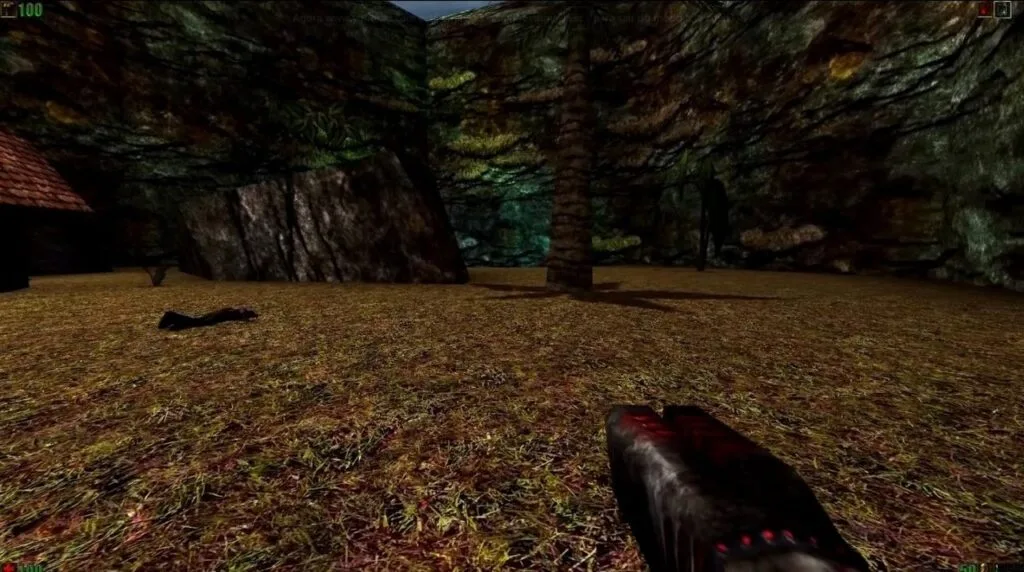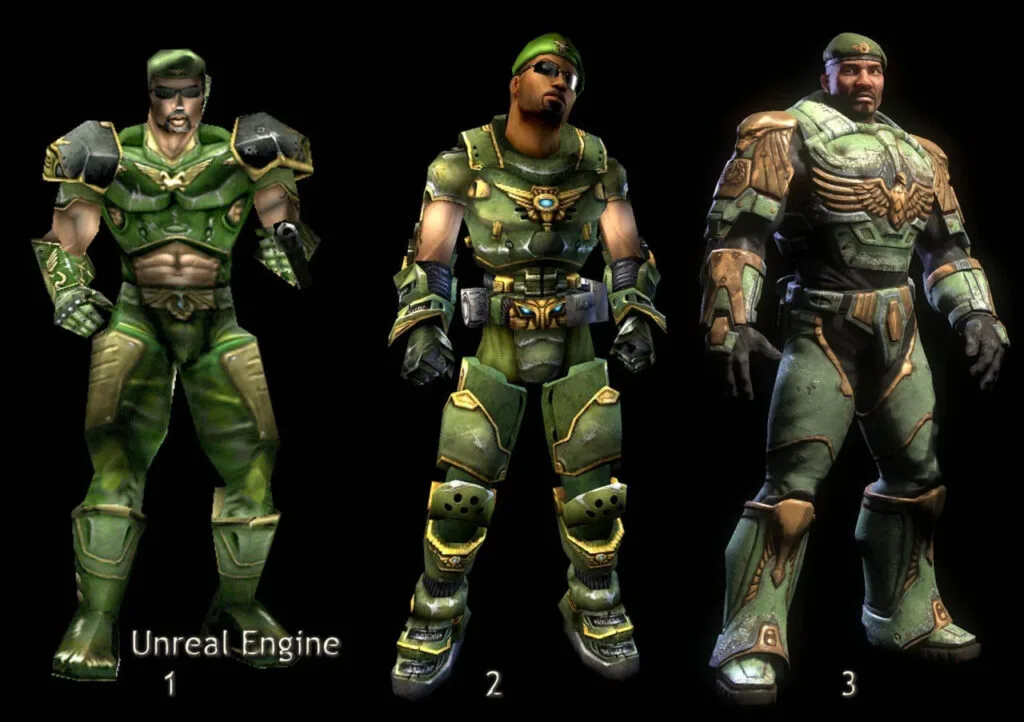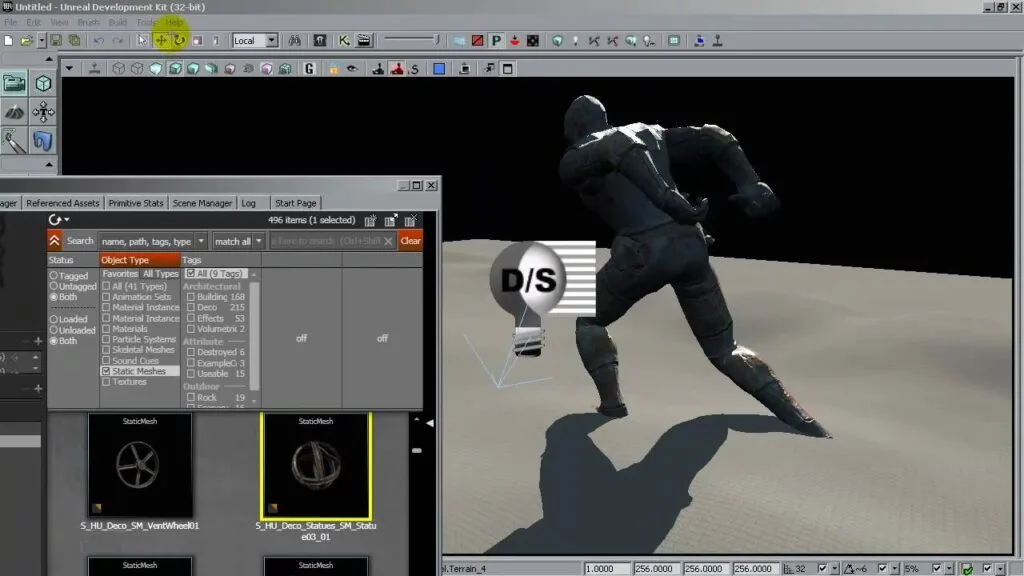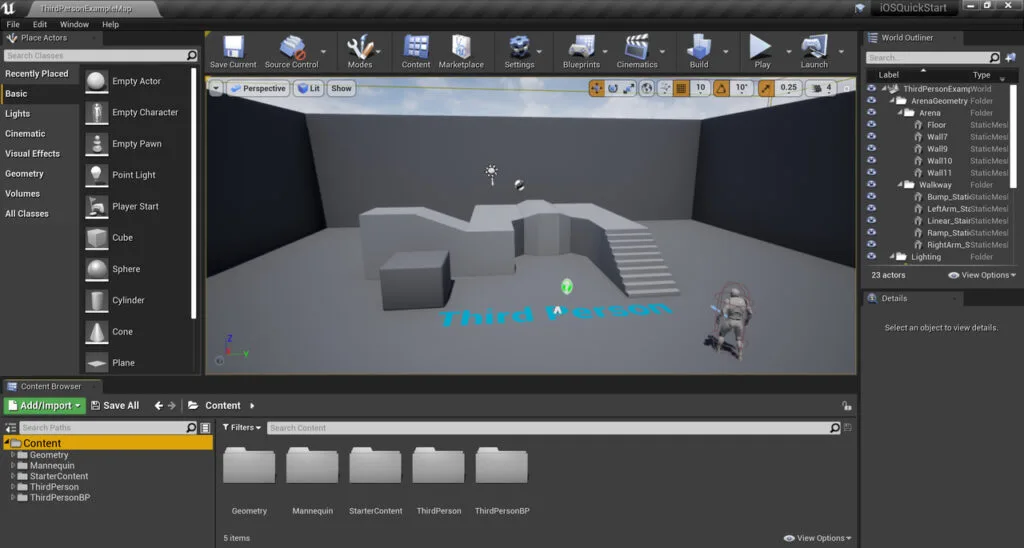
Being a gamer in 2022 means enjoying magnificent titles, with ultra-realistic graphics (characters and environments), cutting-edge features and a multitude of game development tools. But if this is reality today, there is a great responsible behind it: the Unreal Engine.
Like Unity, Construct or GameMaker, the Unreal Engine (UE) is a game engine — also known as a “game engine” in English, or simply a “graphic engine” — used for game development.
What is a game engine?
But before knowing the history of this UE, it is necessary to understand what a game engine is. A game engine is basically a tool used by game devs. (do not say)which has a vast library capable of assembling and building game elements in real time.
This “package” includes graphics engines to render 2D or 3D graphics, physics engines to simulate real-world activities — such as collisions, for example — as well as support for sounds, artificial intelligence (AI) and programming. All this through a variety of programming languages.
The idea here is simple: in the past, each game was developed in a unique and exclusive way and little was used from one game to another. The game engines created a kind of standard to make life easier for devs and prevent a new title from being developed literally “from scratch”.
These tools were exclusively focused on games, but their developments also allowed uses for modeling and even cinematographic works. And in this segment, the highlight goes to the Unreal Engine, which today is one of the most popular and powerful game engines on the market.
The Unreal Engine’s Journey
The beginning of everything
Again, UE is nothing more than Epic’s game engine. But what many don’t know is that the Unreal Engine actually emerged as a game. In 1998, Epic Games released the game Unreal: an FPS (first person shooter) game that came to clash with Quake II, from id Software.
The title was (and still is) considered one of the most beautiful games of the genre at the time, bringing highly detailed outdoor and indoor areas that stood out. All this in C++ language. Among the community, the verdict is almost unanimous: Unreal did have a better game design than Quake II.

Quake II, released by id Software in 1997 – Image: Reproduction

Unreal, released by Epic Games in 1998 – Image: Reproduction
The success was inevitable and attracted the eyes of other developers, who wanted to use the same graphics engine used in Unreal. And this was possible with the opening of licenses made by Epic to partners, allowing the technology to be “borrowed” to other companies.
“After we started showing an early version of Unreal, our first two licensees — Legend Entertainment and Microprose — called us and asked us about the possibility of using our engine in their games. We were excited about the opportunity and our initial collaboration with these partners defined the style of our engine business that remains to this day: a community-oriented approach and open, direct communication between licensees and our engine team,” said Tim Sweeney, co-founder and CEO of Epic Games, in an old interview with IGN.
Examples of games in UE1: Unreal Tournament, Deus Ex, Star Trek: Deep Space Nine: The Fallen and Harry Potter and the Philosopher’s Stone.
Version 2.0
With the success of UE1, Epic decided to optimize its game engine and make it support for PlayStation 2, Xbox and GameCube. This became reality in 2002, when version 2.0 of the Unreal Engine debuted on the market, powering the game America’s Army.
The improvements were focused on adding more variety and depth to the tools available. The Karma physics system, for example, was rewritten for even more efficiency, while a new particle system was added and the Unreal Editor got an update for usability and performance.
Another interesting point is that the potential of the second generation of the Unreal Engine decoupled the graphics engine from the FPS genre. Developing a game in the EU no longer meant creating a game that was necessarily similar to Unreal, Quake II and company, and technology made room for other types of experience.
Examples of games in UE2: Lemony Snicket’s A Series of Unfortunate Events, Magic: The Gathering – Battlegrounds and Spider-Man 2.
HD and UDK games “on track”
But if there is an important phase in this Unreal Engine trajectory, it was the UE3 phase. The 3rd generation of the graphics engine was launched in 2006 with the game Gears of War, demonstrating the potential of the technology that started to support projects for consoles in HD — PlayStation 3, Xbox 360 and Nintendo Wii.
As expected, the update brought a number of optimizations (like dynamic shadows and normal mapping) and tool updates. But one of the biggest highlights was the announced features for the technology that eased production impasses between game developers.
In practice, the ease of the tools allowed the development of a title to no longer be so dependent on a team of programmers. With the transition, operations were transferred to other professionals (such as artists and designers), which optimized a precious element for devs: time.

Image: Reproduction/thelastsandwich
Of course, the journey was not easy. At first, several studios were lost in the midst of so many tools and with so many updates. Did the Unreal Engine’s technological capability allow for impressive graphics? Yes. But in a much more complicated and expensive way than before.
But it was in this same period that Epic “turned the game”. Years after devs got used to the engine, the company announced, in 2009, a free version of the Unreal Development Kit (UDK) based on UE3. In short, a basic and free version of the game engine.

Image: Reproduction/Jonathan Villaverde
As a result, small and independent developers were able to download the basic version of the tool free of charge to create games “from scratch” and on their own. Of course, being free, the software did not allow product launches for commercial purposes. But it was a great way to democratize and foster the game development industry.
Examples of games in UE3: Mass Effect, Infinity Blade, Borderlands, Batman: Arkham Asylum and Bioshock.
fourth generation
The penultimate generation of the Unreal Engine was a long-standing project—no wonder, it had been in development since 2003. But the wait was worth it. Not to mention the support for platforms such as PS4, Xbox One and Wii U, the engine has also gained relevance in architectural projects, films and virtual reality.
All of the optimizations (among them graphical improvements, addition of real-time global lighting, and reduction of iteration time for devs) were presented at the 2012 Game Developers Conference as something that would “come to shock the public” at a later date. And shocked.
The proof was the final product of Daylight, the first title to use the engine released in 2014. The graphics, fluidity and lighting features were eye-catching, and behind the scenes, the devs revealed that using UE4 made the entire development process much faster and more practical development.
In the same year, Epic launched the Unreal Engine marketplace, which allowed subscribers to market a variety of packages and projects on the tool. Back in 2015, the company released UE4 for free to the world — but with a fee on top of final productions.
“You can download the engine and use it for everything from game development, education, architecture and visualization to VR, film and animation. When you submit a game or app, you pay 5% royalties on gross revenue after the first $3,000 per product, per quarter. It’s a simple arrangement where we succeed only when you succeed,” the company said on its website.
The result of a powerful game engine that made life easier for devs and that could be used “on the fly” by independent developers or major studios? Success, of course.
Examples of games in UE4: Fortnite, Hellblade: Senua’s Sacrifice, Shenmue 3 and Star Wars Jedi: Fallen Order.
In search of photorealism
And to finish off the current Unreal Engine timeline, we need to talk about UE5. The engine has been available in early access since last year, but its first public version was only released in April of this year. The focus? State-of-the-art real-time 3D content and experiences with greater freedom, fidelity and flexibility than ever before.
The new generation of the game engine brings a series of improvements, but the highlight is “on account” of the Lumen and Nanite resources. The first, according to Epic, is a “fully dynamic global lighting solution that lets you create realistic scenes where indirect lighting quickly adapts to changes in direct lighting or geometry.”
Nanite is a new virtualized micropolygon system from UE5 that offers the ability to create games and experiences with massive amounts of geometric detail. This enables extremely realistic scenes that are rich in detail and maintain a frame rate without losing fidelity.
Among the many new features, it is also worth mentioning the feature that automatically divides areas and allows several people to work in the same region at the same time. Not only does this save developers time, it also fuels open-world titles like the recent hit Elden Ring.
It is worth remembering that it should still take some time for several studios to adapt to the news, given that the public version of UE5 has just been released. The good news is that, in addition to Fortnite (which has migrated to the engine), The Matrix Awakens experience can hint at the potential of the new generation of the Unreal Engine.
Games already confirmed in UE5: Black Myth: Wukong, Senua’s Saga: Hellblade 2, ILL, plus upcoming The Witcher and Tomb Raider titles.
How to explain the success of Unreal Engine?
The million-dollar question, in fact, may be simpler than it sounds. Of course, the Unreal Engine was not the first game engine, but it was one of the pioneers in the industry. That alone would be a big factor in demonstrating its relevance to the gaming industry.
But there’s more behind it. Like the Google search engine, Epic Games’ EU is constantly updated. If, on the one hand, this means a new challenge for devs with each generation, on the other hand, it encourages the development of the segment and shows that the tool increasingly seeks to adapt to new technologies that appear on the market.
In addition, there is the great business model found by Epic Games. The company seems to have been right to build a strategy that aims to profit through royalties, while “democratizing” game development with its free versions of the engine.
And partnerships make the difference. By establishing relationships with developers or companies such as Nvidia and AMD, Epic guarantees that it will have support to optimize its engine with the best technologies on the market. The consequence is a product passed over by big or small studios, with profits in both cases.

Image: Disclosure / Epic Games
It’s true that Unity, Unreal Engine’s main rival, also continues to show that it can go head to head with the biggest game engine on the market. Does this mean that the EU’s leadership is threatened? Not necessarily. But competition further accelerates the industry’s advances.
And at the end of the day, who wins with all this are gamers.



